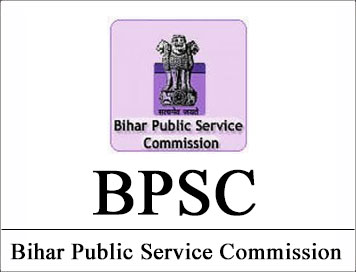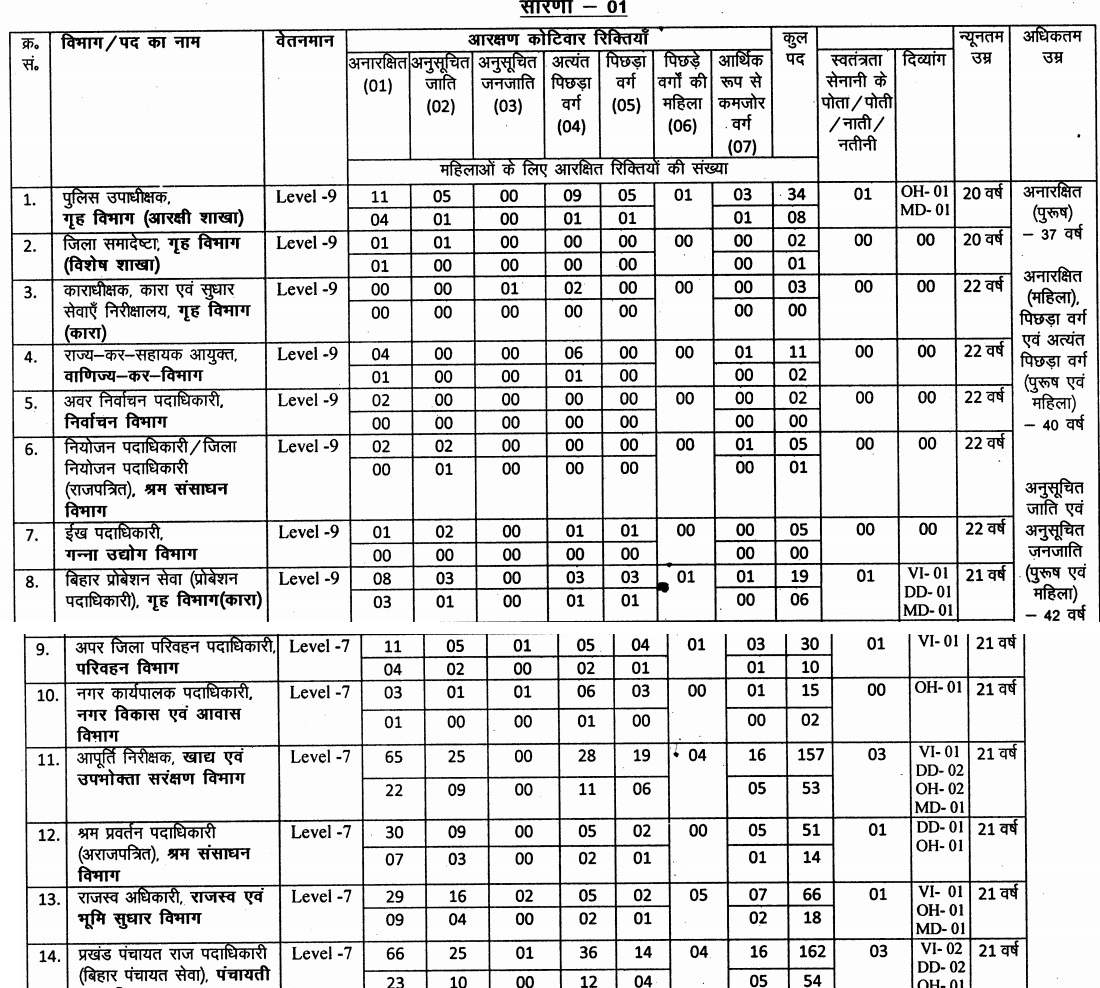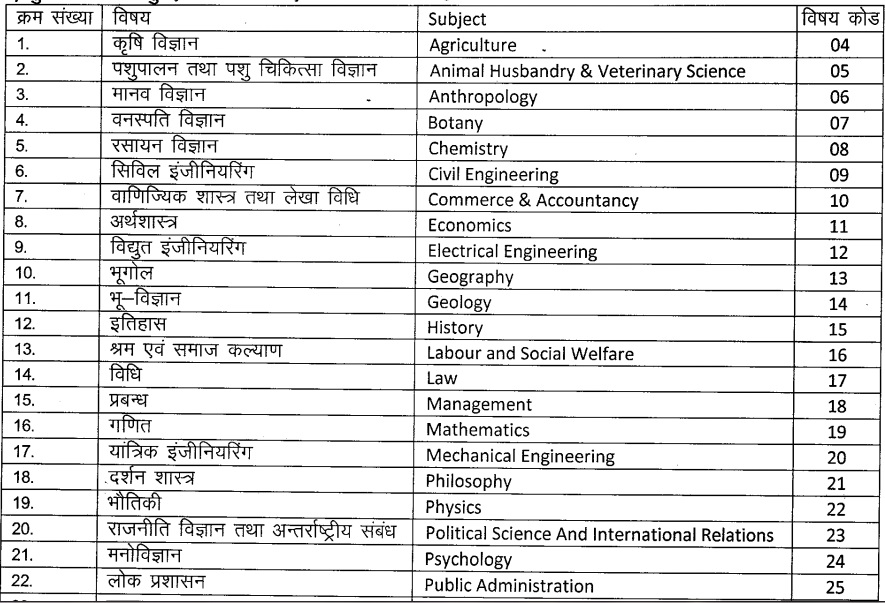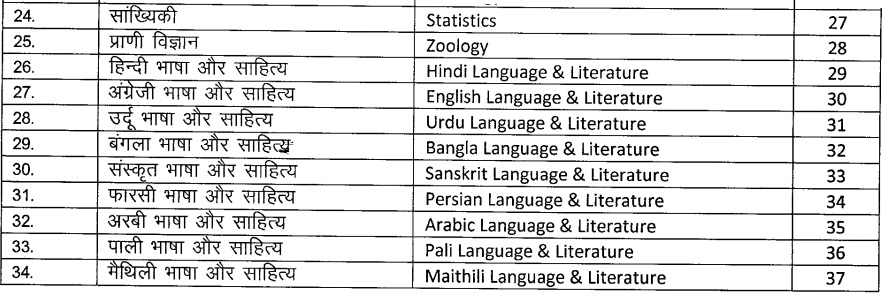
(अधिसूचना) बिहार लोक सेवा आयोग 66 वीं संयुक्त (प्रारम्भिक) प्रतियोगिता परीक्षा - 2020
Bihar PSC : 66th Combine Competitive (PRE) Exam 2020
रिक्तियां :

टिप्पणीः 1. उपर्युक्त संयुक्त (प्रारंभिक) प्रतियोगिता परीक्षा के लिए सुयोग्य भारतीय नागरिकों से ऑनलाईन (online) आवेदन पत्र आमंत्रित किए जाते है। ऑनलाईन आवेदन भरने हेतु विस्तृत आवश्यक निर्देश आयोग के वेबसाइट पर उपलब्ध है।
शैक्षिक योग्यता:
ऑनलाईन आवेदन भरने की अंतिम तिथि तक आवेदक को मान्यताप्राप्त विश्वविद्यालय से स्नातक अथवा समकक्ष परीक्षाओं में उत्तीर्ण होना अनिवार्य है। ऑनलाईन आवेदन भरते समय आवेदक को ऑनलाईन आवेदन पत्र के विहित कॉलम में स्नातक या समकक्ष डिग्री के सम्बन्ध में पूर्ण ना देना अनिवार्य होगा।
आरक्षणः
(i) ऑनलाईन आवेदन पत्र में इंगित कॉलम में आरक्षण का दावा नहीं करने पर आरक्षण का लाभ नहीं मिलेगा।
(ii) जाति के आधार पर आरक्षण का लाभ उन्हीं उम्मीदवारों को मिलेगा, जिनका स्थायी निवास बिहार राज्य में है अर्थात् जो बिहार के मूलवासी हैं। बिहार राज्य के बाहर के निवासी अभ्यर्थी को आरक्षण का लाभ देय नहीं होगा। आवेदन में दिया गया स्थायी पता ही आरक्षण प्रयोजन के लिए स्थायी निवास अनुमान्य होगा।
(iii) (A) अनुसूचित जाति एवं अनुसूचित जनजाति के उम्मीदवारों को निम्नांकित प्रमाण-पत्र जमा करना अनिवार्य होगा :
(a) जाति प्रमाण-पत्र
(b) स्थायी निवास/मूल निवास (डोमिसाइल) प्रमाण-पत्र
(B) पिछड़ी जाति एवं अत्यन्त पिछड़ी जाति के उम्मीदवारों को क्रीमीलेयर रहित प्रमाण-पत्र जमा करना अनिवार्य होगा। | पिछड़ा वर्ग एवं अत्यन्त पिछड़ा वर्ग की दशा में; अपने स्थायी अधिवास अंचल के राज्य सरकार द्वारा अधिसूचित अंचलाधिकारी द्वारा निर्गत क्रीमीलेयर रहित प्रमाण-पत्र एवं अनुसूचित जाति/अनुसूचित जनजाति की दशा में, अपने स्थायी अधिवास अंचल के राज्य सरकार द्वारा अधिसूचित अंचलाधिकारी द्वारा निर्गत स्थायी निवास प्रमाण-पत्र/मूल निवास
(डोमिसाइल) प्रमाण-पत्र एवं जाति प्रमाण-पत्र मान्य होगा।
(C) सामान्य प्रशासन विभाग, बिहार की अधिसूचना संख्या-2622, दिनांक-26.02.2019 के आलोक में आर्थिक रूप से कमजोर वर्ग के लिए रिक्ति की उपलब्धता की स्थिति में नियमानुसार 10% आरक्षण देय होगा। आर्थिक रूप से कमजोर वर्ग के सदस्य द्वारा प्रस्तुत किया जानेवाला आय एवं परिसम्पत्ति प्रमाण पत्र उपर्युक्त अधिसूचना के साथ संलग्न अनुसूची-I (प्रपत्र-I) में सक्षम् प्राधिकार द्वारा निर्गत होना चाहिए। आरक्षण का दावा करने वाली विवाहित महिलाओं का जाति/क्रीमीलेयर रहित प्रमाण-पत्र उनके पिता के नाम से निर्गत होना चाहिए न कि उनके पति के नाम से। उपर्युक्त आरक्षण संबंधी सभी प्रमाण-पत्र आयोग कार्यालय में सत्यापन के समय मूल रूप से प्रस्तुत नहीं करने पर आरक्षण का लाभ देय नहीं होगा।
(iv) आरक्षित कोटि के उम्मीदवार अपनी जाति के अनुरुप पूर्ण रूप से संतुष्ट होने के पश्चात् ही आरक्षित कोटि का अंकन ऑनलाईन आवेदन के संबंधित कॉलम में करेंगे एवं ऑनलाईन आवेदन भरते समय उनके पास आरक्षण कोटि के अनुरूप सक्षम प्राधिकार से निर्गत प्रमाण-पत्र उपलब्ध होना अनिवार्य होगा। किसी प्रकार की त्रुटि होने पर आरक्षण का दावा मान्य नहीं होगा।
शुल्क के भुगतान का माध्यम :
(i) सामान्य अभ्यर्थियों के लिए 600/- (छ: सौ) रूपये
(ii) केवल बिहार राज्य के अनुसूचित जाति/अनुसूचित जनजाति के लिए- 150/- (एक सौ पचास) रूपये
(iii) बिहार राज्य की स्थायी निवासी सभी (आरक्षित/अनारक्षित वर्ग) महिला उम्मीदवारों के लिए- 150/- (एक सौ पचास) रूपये।
(iv) दिव्यांग अभ्यर्थियों (40% या उससे अधिक) के लिए- 150/- (एक सौ पचास) रूपये
(v) अन्य सभी उम्मीदवारों के लिए- 600/- (छः सौ) रूपये।
अभ्यर्थी को उपर्युक्त परीक्षा शुल्क के अतिरिक्त विभिन्न बैंकों द्वारा निर्धारित चार्ज भी देना होगा, जिसे ऑनलाईन भुगतान के क्रम में बैंक द्वारा स्वतः बैंक चार्ज के रूप में ले लिया जाएगा। c
आयु सीमा:
दिनांक 01.08.2020 को न्यूनतम उम्र सेवावार, 20 वर्ष, 21 वर्ष एवं 22 वर्ष एवं अधिकतम अनारक्षित (पुरूष)- 37 वर्ष, अनारक्षित (महिला), पिछड़ा वर्ग एवं अत्यन्त पिछड़ा वर्ग (पुरूष एवं महिला)- 40 वर्ष तथा अनुसूचित जाति एवं अनुसूचित जनजाति (पुरूष एवं महिला)- 42 वर्ष । सारणी - 01 में अंकित सेवाओं में क्रम संख्या 1, 3, 4, 5, 6, 7, 9 एवं 13 की सेवाओं के लिए 22 वर्ष एवं क्रम संख्या 8, 10, 11, 12, 14 एवं 15 की सेवाओं के लिए 21 वर्ष तथा क्रम संख्या 2 के लिए 20 वर्ष होना आवश्यक है।
शारीरिक क्षमता :
बिहार पुलिस सेवा के लिए पुरूष उम्मीदवारों की न्यूनतम ऊँचाई 5 फीट 5 ईंच और न्यूनतम छाती की माप, बिना फुलाये, 32 (बत्तीस) ईंच होनी चाहिए। परन्तु, अनुसूचित जाति/अनुसूचित जनजाति के उम्मीदवारों के प्रसंग में उपर्युक्त शारीरिक माप के उम्मीदवार उपलब्ध नहीं होने पर उनकी न्यूनतम ऊँचाई 5 फीट 3 ईंच तथा छाती की माप, बिना फुलाये, 31 (एकतीस) ईंच होनी चाहिए। महिलाओं की न्यूनतम ऊँचाई 5 फीट 2 इंच होनी चाहिए।
मेधा सूची :
उपर्युक्त राज्य सेवा/संवर्गवार एवं आरक्षण कोटिवार उपर्युक्त संयुक्त प्रतियोगिता परीक्षा की रिक्तियों को भरने के निमित्त, संयुक्त (मुख्य) प्रतियोगिता परीक्षा के सफल अभ्यर्थियों की सूची प्रकाशित की जायेगी; तथा उनकी अन्तर्वीक्षा के पश्चात् अन्तिम परीक्षाफल सेवा/संवर्गवार एवं आरक्षण कोटिवार मेधाक्रम में ही निर्गत/प्रकाशित किया जायेगा। संयुक्त (मुख्य) प्रतियोगिता परीक्षा में सफल होने के पश्चात अन्तर्वीक्षा हेतु आमंत्रित अभ्यर्थियों को अन्तर्वीक्षा में भाग लेना अनिवार्य है, अन्यथा वे अन्तिम परीक्षाफल हेतु बनायी जानेवाली मेधा सूची में शामिल नहीं किये जायेंगे।
आवेदन कैसे करें:
1: जिस तिथि को रजिस्ट्रेशन किया गया है उसके अगली तिथि को पूर्वाह्न 11.00 बजे के बाद परीक्षा शुल्क का ऑनलाईन भुगतान करने के लिए आवेदक को लिंक उपलब्ध होगा।
(ii) उपर्युक्त विज्ञापन के अन्तर्गत ऑनलाईन आवेदन भरने से संबंधित आवश्यक (विस्तृत) निर्देश इस विज्ञापन के साथ संलग्न है।
अभ्यर्थी ऑनलाईन आवेदन भरने के पूर्व उक्त दिशा निर्देशों का भली भाँति अध्ययन कर लेंगे तथा ऑनलाईन आवेदन भरने के क्रम में सभी सूचनाएँ सही-सही एवं सुस्पष्ट अंकित करेंगे। ऑनलाईन आवेदन भरने हेतु आवश्यक (विस्तृत) निर्देश का अक्षरशः अनुपालन नहीं करने पर एवं ऑनलाईन आवेदन भरने के क्रम में अभ्यर्थी द्वारा की गयी प्रविष्टि में किसी प्रकार की त्रुटि के लिए आयोग जिम्मेवार नहीं होगा। इस संबंध में किसी प्रकार के सुधार/परिवर्तन हेतु अभ्यावेदन पर विचार नहीं किया जाएगा।
ऑनलाईन आवेदन में भरी गयी सूचनाओं को मूल प्रमाण पत्र/अंक पत्रों से मिलान करने के क्रम में किसी भी प्रकार की त्रुटि पाये जाने पर उम्मीदवारी रद्द कर दी जाएगी।
(iii) उम्मीदवार, चालान में अंकित नाम, जन्म तिथि, कोटि, परीक्षा शुल्क इत्यादि से संतुष्ट होने के उपरान्त ही बैंक में परीक्षा शुल्क जमा करेंगे।
(iv) ऑनलाईन आवेदन में अंकित E-mail Id, Mobile Number तथा प्राप्त User Name एवं Password को सुरक्षित रखना आवेदक की जिम्मेवारी होगी। इसे वे अंतिम परीक्षाफल प्रकाशन तक सुरक्षित रखेंगे। अभ्यर्थी ऑनलाईन आवेदन भरने के क्रम में अपने ही कार्यरत मोबाईल नम्बर एवं ई-मेल आई.डी, अंकित करेंगे। किसी भी परिस्थिति में किसी अन्य व्यक्ति का मोबाईल नम्बर एवं ई-मेल आई.डी. अंकित नहीं करेंगे।
(v) मात्र रजिस्ट्रेशन करने एवं बैंक में चालान जमा करने से यह नहीं माना जाएगा की आवेदक द्वारा पूर्ण रूप से ऑनलाईन आवेदन भर लिया गया है।
(vi) इन्टरनेट या पोस्टल या बैंकिग व्यवधान के लिए आयोग उत्तरदायी नहीं होगा। अतः अभ्यर्थी आखिरी समय का इंतजार नहीं करेंगे एवं उसके पूर्व ही सभी प्रक्रिया पूरी कर लेंगे।
(vii) उम्मीदवार हाल का खिंचा हुआ अपना एक फोटोग्राफ तथा हिन्दी एवं अंग्रेजी में हस्ताक्षर स्कैन कर ऑनलाईन आवेदन में निर्धारित स्थान में अपलोड करेंगे। उम्मीदवार संतुष्ट हो लेंगे कि अपलोड किया गया फोटोग्राफ तथा हिन्दी एवं अंग्रेजी हस्ताक्षर का इमेज सुस्पष्ट है।
(viii) इस प्रतियोगिता परीक्षा में सम्मिलित होने वाले इच्छुक अभ्यर्थियों को यह भी निर्देश दिया जाता है कि आवेदन करने समय जो फोटोग्राफ उनके द्वारा आवेदन पत्र पर अपलोड किया जा रहा है, उसकी कम से कम पाँच अतिरिक्त प्रतियाँ वे अपने पास सुरक्षित रखेंगे, ताकि आवश्यकता पड़ने पर या आयोग द्वारा मांगे जाने पर उसे उनके द्वारा जमा किया जा सके।
(ix) ऑनलाईन भुगतान में किसी प्रकार का इन्टरनेट व्यवधान/गलत भुगतान/असफल भुगतान Unsuccessful ion Status Failure के लिए आयोग उत्तरदायी नहीं होगा तथा अभ्यर्थी को सुधार हेतु अतिरिक्त समय नहीं दिया जाएगा।
चयन प्रक्रिया :
प्रारम्भिक परीक्षा :
(i) संयुक्त (प्रारम्भिक) प्रतियोगिता परीक्षा सामान्य अध्ययन विषय की होगी, जिसके सभी प्रश्न वस्तुनिष्ठ प्रकृति के बहुविकल्पीय होंगे। परीक्षा की अवधि दो घंटे की होगी और कुल अंक 150 होंगे। प्रश्नवार बहुविकल्पीय उत्तरों में से प्रश्नवार किसी एक उत्तर का चयन अपेक्षित होगा। इस प्रारम्भिक परीक्षा में सामान्य विज्ञान, राष्ट्रीय तथा अन्तर्राष्ट्रीय महत्व की समसामयिक घटनाएं, भारत का इतिहास तथा बिहार के इतिहास की प्रमुख विशेषताएं, सामान्य भूगोल, बिहार के प्रमुख भौगोलिक प्रभाग तथा यहाँ की महत्वपूर्ण नदियां, भारत की राज्य व्यवस्था और आर्थिक व्यवस्था, आजादी के पश्चात् बिहार की अर्थव्यवस्था के प्रमुख परिवर्तन, भारत का राष्ट्रीय आन्दोलन तथा इसमें बिहार का योगदान एवम् सामान्य मानसिक योग्यता को जांचने वाले प्रश्न होंगे।
(ii) इस प्रारम्भिक परीक्षा के अधीन उम्मीदवारों का परीक्षाफल, अनुवर्ती संयुक्त (मुख्य) प्रतियोगिता परीक्षा के निमित्त घोषित किया जायेगा। इस निमित्त, कार्मिक एवम् प्रशासनिक सुधार विभाग, बिहार के संकल्प संख्या 2374, दिनांक 16.07.2007 एवं पत्रांक 6706 दिनांक 01.10.2008 के आलोक में प्रारम्भिक परीक्षा में सामान्य वर्ग के लिए 40%, पिछड़ा वर्ग के लिए 36.5%, अत्यन्त पिछड़ा वर्ग के लिए 34% एवं अनुसूचित जाति/जनजाति, महिलाओं तथा निःशक्तता से ग्रस्त (दिव्यांग) उम्मीदवारों के लिए 32% अर्हतांक प्राप्त करना अनिवार्य होगा अन्यथा वे प्रतियोगिता से बाहर हो जाएंगे।
9. (i) प्रारंभिक परीक्षा हेतु ऑनलाईन आवेदन मरते समय ही मुख्य परीक्षा के लिए अपनी इच्छानुसार एक ही वैकल्पिक विषय का चयन करना अनिवार्य होगा। एक बार वैकल्पिक विषय के चयन के बाद उसमें किसी तरह का बदलाव मान्य नहीं होगा एवं इस संबंध में सुधार/परिवर्तन हेतु अभ्यावेदन पर विचार नहीं किया जाएगा।
(ii) प्रारंभिक परीक्षा में सफल अभ्यर्थियों से मुख्य परीक्षा हेतु अलग से आवेदन पत्र भरवाया जाएगा जिसमें सफल अभ्यर्थियों द्वारा निर्धारित अवधि में परीक्षा शुल्क (मुख्य परीक्षा हेतु) विहित प्रक्रिया से जमा करना होगा।
(7) मुख्य परीक्षा हेतु ऐच्छिक विषय एवं कोड निम्नवत है -


महत्वपूर्ण तिथियाँ:
- ऑनलाइन आवेदन / रजिस्ट्रेशन प्रारम्भ होने की तिथि – 28-09-2020
- ऑनलाइन शुल्क जमा करना प्रारम्भ होने की तिथि– 20-10-2020